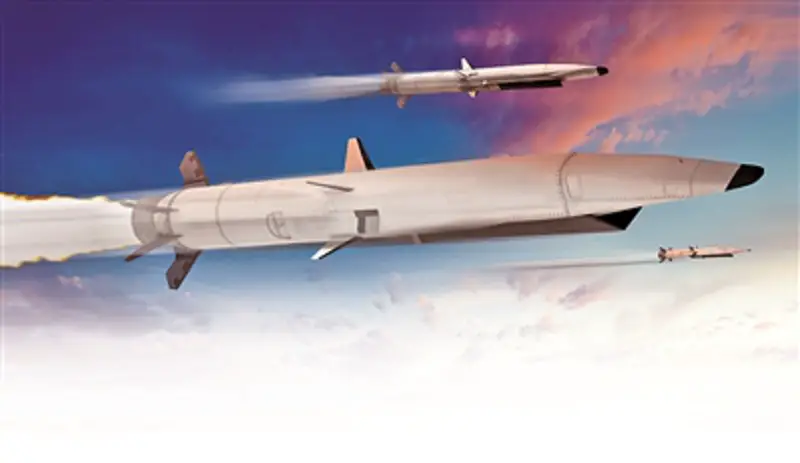By 2030, Japan would simultaneously launch research and development plans to promote two types of hypersonic missiles, glide and cruise, announced the Ministry of Defense of Japan on November 18th. According to this document, Japan plans to deploy a hypersonic cruise missile capable of reaching Mach 5 or above by 2030, and will have a glide missile weapon by mid-2030. Such high-profile weapon development plans have attracted widespread concern.
Explicit time node of weaponization
In fact, Japan has developed hypersonic weapons for a long time and is also one of the countries that occupy the leading position in hypersonic technology. Through long-term exploration in the hypersonic field since the 1980s, Japan has built a good foundation for its development in recent years.
In 2016, the Acquisition, Technology & Logistics Agency (ATLA) of the Japanese Defense Ministry issued the Medium- To Long-Term Technology Outlook (DTO) to plan the development of weaponry and key technologies in the next 20 to 30 years. This document believes that Japan currently relies on subsonic cruise missile in precision strike which is difficult to effectively deter the enemy. Therefore, it is necessary for Japan to develop new hypersonic strike weapons.
With the support of future combat mission and early technology reserves, Japan successively disclosed a number of research projects on hypersonic missiles, reflecting the planning ideas of the parallel development of high-speed boost glide missiles and hypersonic cruise missiles.
In 2017, Japan’s ATLA proposed the “Research on High-Speed Glide Missile Technology for Island Defense” in the 2018 defense budget document. The following year, the program was renamed “Research on High Speed Glide Missiles for Island Defense” and a more detailed phased development plan was proposed. Although the project always uses descriptions such as “high speed” and “supersonic”, the flight speed indicators have not been disclosed and thus it cannot be concluded that they belong to hypersonic weapons. The High Speed Glide Missiles for Island Defense is for inter-island attacks with a range of 300 to 500 kilometers. With land-based launch method, the missiles’ deployment and strike range have triggered concerns worldwide.
In 2018, Japan disclosed its hypersonic cruise missile project for first time. At that time, Japan’s ATLA proposed the “Research on the Essential Technology of Hypersonic Missiles” project in the fiscal year 2019 defense budget document to develop cruise missile technology at speeds above Mach 5, with emphasis on engine technology. It is worth noting that the project started in 2013 and entered the development phase after six years of preparation. This indicates that Japan has carefully evaluated the feasibility of developing hypersonic cruise missiles and may have already formulated a reasonable development plan.
It can be seen that although Japan adopts a strategy of parallel development of glide missiles and cruise missiles, the Japanese Ministry of Defense has explicitly proposed to complete the weaponization of glide missiles by 2035, which shows that its related technology might have reached a certain level of maturity.
As for cruise missiles, Japan’s Ministry of Defense recently disclosed plans to complete the first-type research and development by 2030 and achieve deployment around 2030, showing its confidence in its own technical capabilities and preliminary work to a certain degree. Given the gap between the currently available hypersonic technology and its practicality, there is still considerable uncertainty as to whether it can be deployed in just a decade or so despite Japan’s eagerness to possess such advanced weapons.
Worrisome potential threats
Japan is gradually abandoning its “exclusively defense-oriented” policy and is inclined to take an active offensive in military strategy and equipment development in recent years. As an important part of the future equipment system construction, Japan is firmly committed to the development of offensive missiles.
It is worth noting that although Japan has repeatedly claimed that its equipment development is to defend remote islands, its future threat to Northeast Asia should not be underestimated once Japan has high-tech strike capabilities.
As far as hypersonic missiles are concerned, Japan has mastered carrier rocket technology and aircraft re-entry technology, and has an important foundation for the development of boost glide missiles. It is only a matter of time if Japan wants to develop high-speed boost glide missiles with a range of 300 to 500 kilometers. On the other hand, after the gliding warhead technology is mature, it will not be difficult for Japan to develop a hypersonic-assisted glide missile with faster flight speed and longer range based on its acquired multi-stage solid rocket technology. The new missile will further expand the coverage area and bring pressure to countries in Northeast Asia. Close attention must be paid to this matter.
Source: China Military Online
